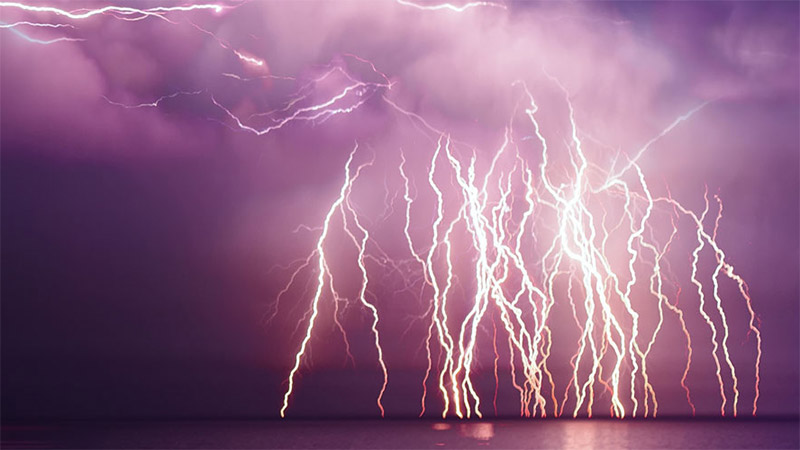Striking history: Lightning and the Washington Monument
It probably comes as no surprise that those of us at Vaisala made up more than a handful of the more than 11 million views of the Washington Monument being struck by lightning on June 4. It is an extremely impressive video. The Washington Monument is one of more than 100 monuments and memorials that make up the National Mall and Memorial Parks in Washington, D.C., USA. Standing at 555 feet (169 meters) tall, the marble monument built to honor the United States of America’s first president George Washington, is the tallest structure in Washington, D.C. After the monument was struck on Thursday evening, I shared some of our National Lightning Detection Network (NLDN) data from the event, but we wanted to go a little deeper into the event and answer the question on everybody’s mind: how often is the monument struck by lightning?
June 4 event
In re-watching the video, the Washington Monument appears to be hit by two cloud-to-ground (CG) strokes from the same lightning flash. Multiple lightning strokes in rapid succession are why lightning appears to flicker when you watch a thunderstorm. NLDN detects the individual CG lightning strokes and in-cloud lightning pulses. On June 4, NLDN detected both CG strokes just after 8.35 pm Eastern Daylight Time.

So why aren’t the detected lightning strokes right on top of the Washington Monument? One of the metrics that lightning detection networks focus on is their location accuracy, which tells how close to the actual lightning event the network located the lightning. The location accuracy can be affected by how the lightning sensors are distributed throughout the network and how lightning waves travel across the ground. The median location accuracy of NLDN is better than 150 meters, which is the best network accuracy across the contiguous United States. In this instance, NLDN detected one stroke 90 meters and one stroke 130 meters from the monument, both quite accurate locations. Lightning that strikes tall towers helps our scientists and engineers validate the performance of NLDN and Global Lightning Dataset GLD360.
How often is the Washington Monument struck?
In answering this question, I am limiting my search to CG flashes between January 1, 2010 and June 6, 2020. CG flashes consist of one or more CG strokes within 10 kilometers and 500 meters. Looking at the NLDN archives, Washington D.C. averaged 557 CG flashes per year between 2010 and 2019. The average flash density for Washington D.C. is 3.2 flashes per square kilometer. The table below shows each year’s data.
If the distribution of lightning across Washington D.C. were uniform, we could expect each square kilometer to receive about 3 flashes per year, or 30 flashes in the 2010-2019 period. Between 2010 and 2019, NLDN detected 27 flashes in the square kilometer surrounding the Washington Monument, just slightly below the expected value.
The map below plots all CG flashes (red squares) within 1 kilometer (black line) of the Washington Monument between January 1, 2010 and June 6, 2020. The colored circles surrounding the monument are 500-meter (yellow), 250-meter (orange), and 100-meter (red) distance indicators.

For the purposes of this exercise, we are assuming that any flashes within 100 meters of the Washington Monument struck the monument, any flashes within 250 meters had a high likelihood of striking the monument, and any flashes within 500 meters had a moderate likelihood of striking the monument. Two flashes are located in the 100-meter circle, an additional seven flashes are located in the 250-meter circle, and 10 more flashes are located in the 500-meter circle. This gives us rough strike estimates of twice per year on the high end and once every five years on the low end.
Summary
The Washington Monument is the tallest structure in Washington D.C. and was struck by lightning on June 4. We reviewed NLDN CG flash data since 2010 and estimate that the Washington Monument is struck by lightning between once every five years and twice per year. A more in-depth review of the NLDN data, including confidence ellipses, could give additional information about how frequently the Washington Monument is struck by lightning.




Add new comment